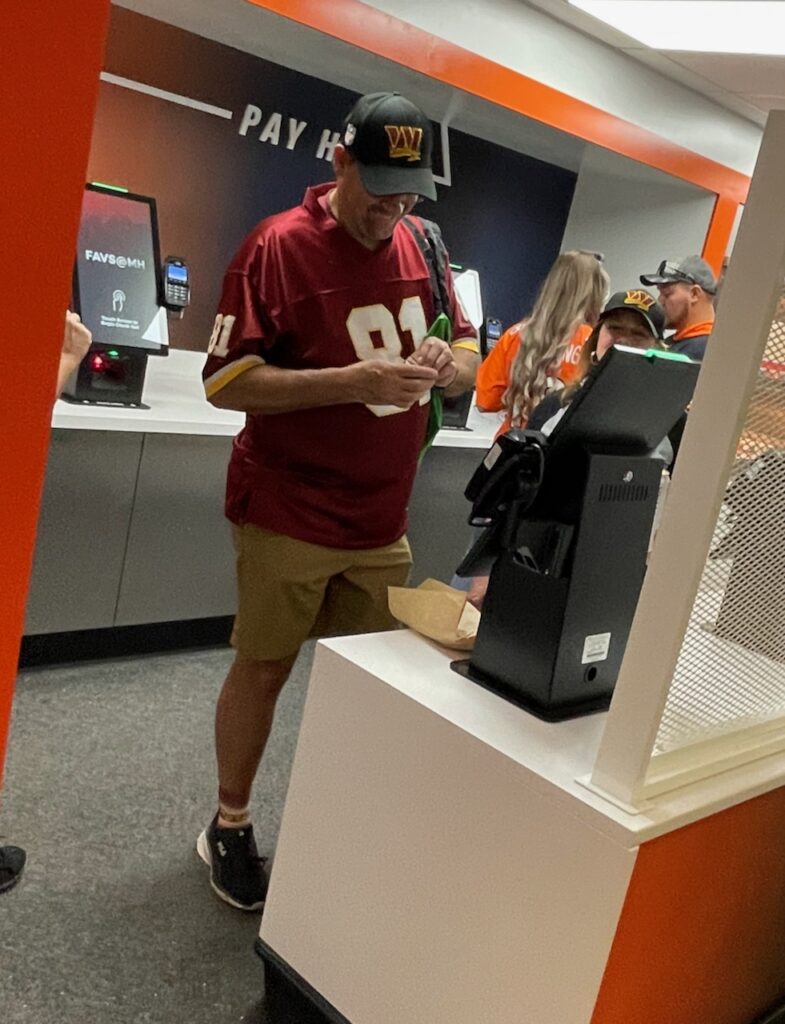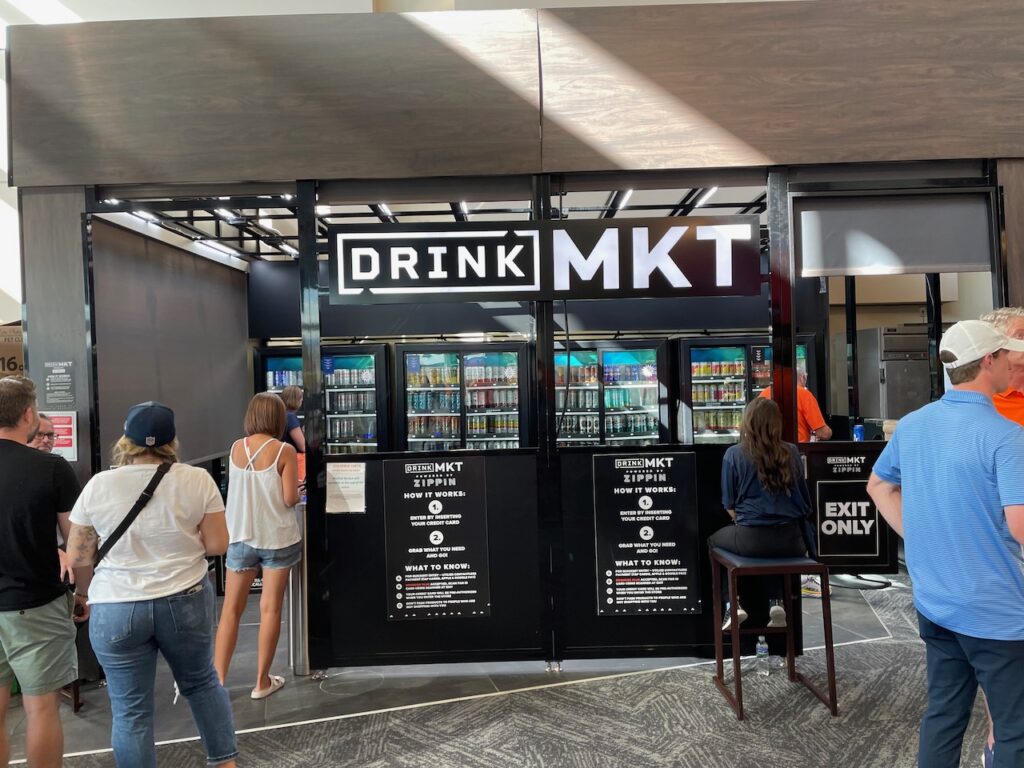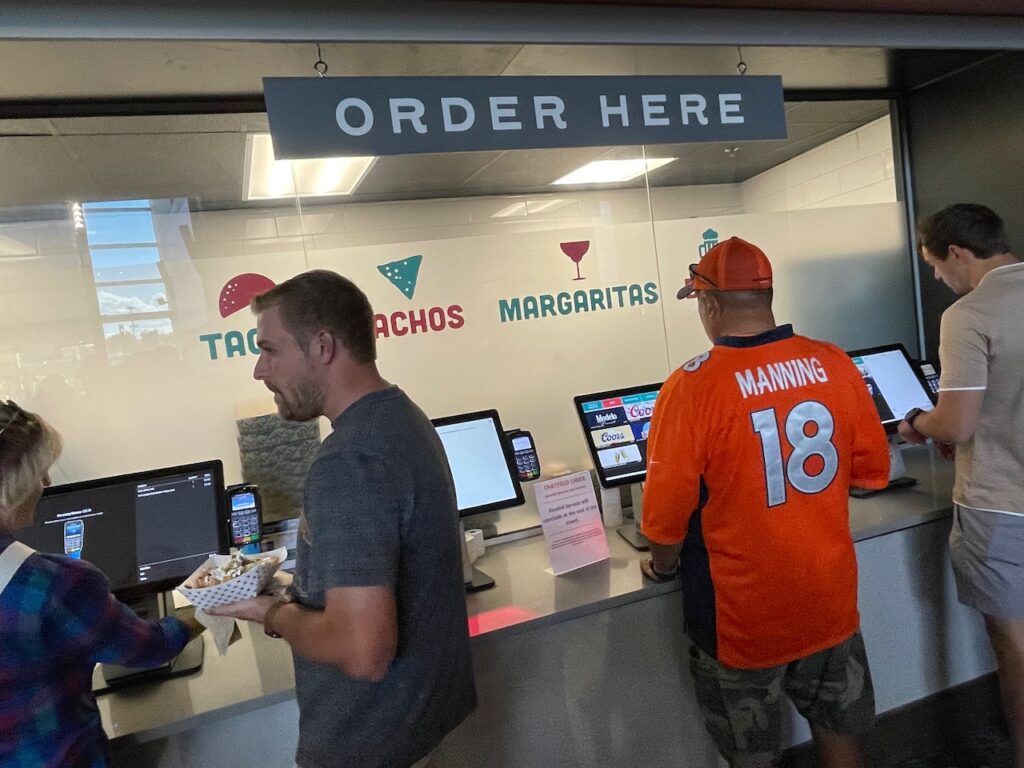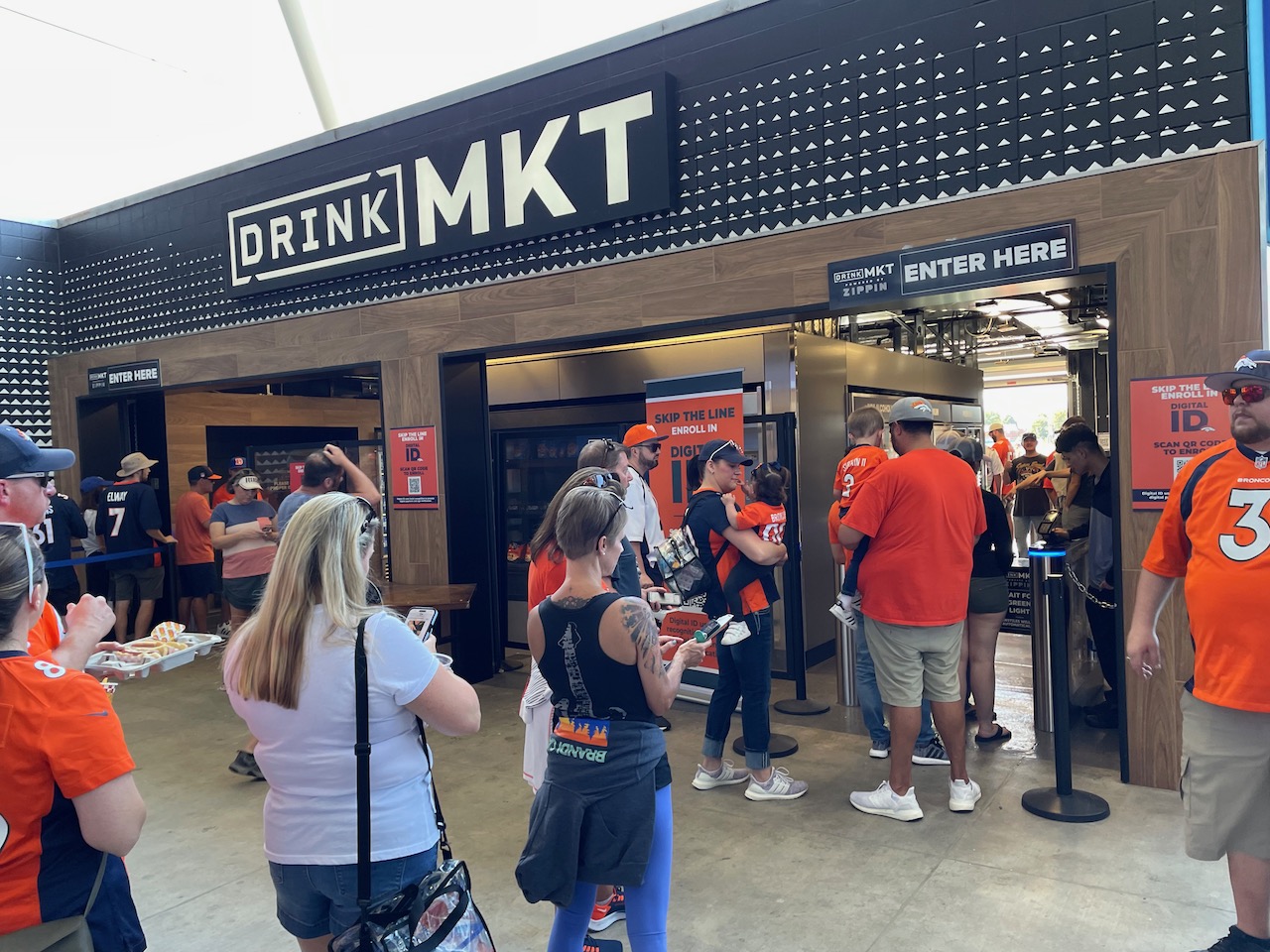The linebacker-size Denver Broncos fan walked boldly up to the new-technology concession stand, stopped at the entry, spread his hands wide and said with a smile:
“OK, tell me what I need to do here.”
If you’ve been to a game recently at Denver’s Empower Field at Mile High, it would not surprise you that the fan expected to encounter something different when he went to purchase food or drink. For the past few years, the stadium has been a kind of ground zero for stadium concessions technology innovation, pushing the envelope in search of friction-reducing systems.
Led by the Broncos and their caterer, Aramark Sports + Entertainment, the stadium was moving in this direction even before the Covid pandemic. But the pace of innovation accelerated once fans came back from the shutdowns, with many more fans willing to adopt new transaction technologies that put a premium on social distancing.
In Denver, Broncos fans became some of the first to encounter optical scanning self-checkout terminals, where concession items get scanned by cameras instead of being tallied by a cashier. Empower Field at Mile High was also host to some of the first checkout-free concession stands, where customers simply scan a credit card at an entry gate, get what items they want, and leave the store, with payment taking place online later. While other stadiums were also testing checkout-free stands, the Broncos and Aramark quickly went all-in on the concept, expanding to the nine such stores found in the stadium today.

And this season, there was another twist added: Customers using the checkout-free stores could enroll in a program that would let them use facial authentication systems for age verification and payment, for an even faster way to get food and beverages.
In addition to more new technology, including self-checkout kiosks and a program that allowed fans to self-checkout via scanning items on their phones, Aramark and the Broncos also brought some new ideas to concession stand layout and operation this fall, with new configurations designed to further speed up the purchasing process.
And if all these innovations improved the game day experience for fans, their enthusiastic embrace of the new systems may have been even better for business. In addition to allowing venues to operate stands with fewer employees per stand, the new technology stores are outperforming many traditional belly-up stands. According to Alicia Woznicki, vice president of design and development at Aramark Sports + Entertainment, new-technology concession stands saw a 50 percent rise in revenues last year at all Aramark properties.
To make sure we didn’t just rely on positive statements from providers, Stadium Tech Report visited the stadium during a Broncos home game this season to see how the technology worked with a live crowd, and whether or not it was living up to its praise.
Our take, after spending several hours watching fans at different stands with different types of technologies, is that the new systems do work well at speeding up transactions, and can even add a little fun along the way. While very new procedures like the facial-authentication systems may take a little longer to catch on, the ability of fans to watch other fans do things that very obviously produce a faster transaction are a powerful allure to try something new.
Watching our “big” fan at a gate to one of the checkout- free stores was instructive – the store staffer at the front gate quickly explained the how-to process to get inside (a credit card scan and an ID check). With a smile the fan strode into the store, grabbed his items and quickly left – another satisfied participant in the Denver concessions-technology experiment.
Next: Part 1: Facing a new way to Zippin











